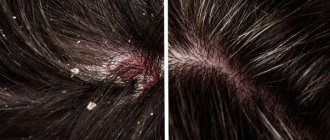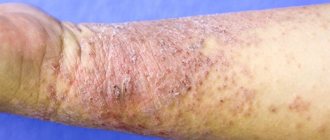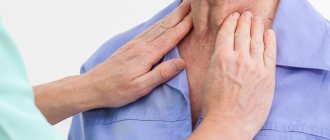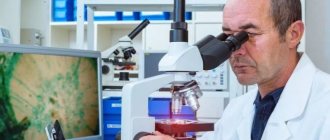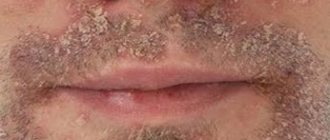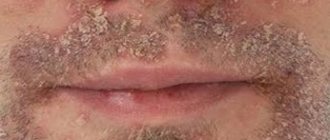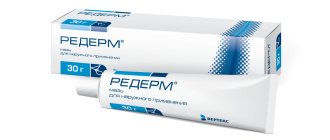Seborrhea develops in the so-called seborrheic zones - areas of the skin in which there are especially many sebaceous glands, about 400-600 per 1 cm2 1. These include:
- scalp;
- T-shaped area of the face (forehead, nasolabial folds, chin);
- the central part of the chest and the upper part of the back between the shoulder blades.
Seborrheic dermatitis is a chronic inflammatory disease that develops when the yeast-like fungus Malassezia furfur begins to actively multiply in the affected areas. About 3% of the population suffers from manifestations of this disease, and young people are more susceptible to them, among whom the number of patients increases to 5%.2
The disease is considered quite common. It manifests itself especially often in the first years of a child’s life, as well as in people after 40 years of age. This age-related feature of the occurrence of seborrheic dermatitis is explained by the fact that it is during these periods of a person’s life that the sebaceous glands on the body work with high intensity.
Causes of occurrence and development
The development of seborrhea and seborrheic dermatitis is based on dysfunction of the sebaceous glands of the skin, which manifests itself in the fact that the glands begin to produce either too little secretion (sebum) or too much, in addition, the composition and consistency of the secretion also changes. Excess secretions are mixed with dust, dead skin cells and can serve as a substrate for the active reproduction of opportunistic microorganisms, most often fungi of the genus Malassezia, which are normally present on the skin of 90% of the population3. The metabolic products of this pathogen cause skin irritation and its inflammatory reaction, manifested in the form of redness and the appearance of papules covered with greasy crusts.
Why does the functioning of the sebaceous glands malfunction? Doctors identify many factors that can play a role in dysfunction of the sebaceous glands. Among them:
- genetic predisposition;
- changes in hormonal levels (increased levels of progesterone and androgens, decreased levels of estrogen - therefore, the disorder is often found in men), including in infancy, puberty, pregnancy, and chronic diseases;
- decreased immunity due to chronic or infectious diseases, taking potent medications;
- a lot others.
The ducts of the sebaceous glands open into the mouth of the hair follicle, so with seborrhea and seborrheic dermatitis, not only the skin, but also the patient’s hair suffers.
The problem may worsen as a result of prolonged exposure to heat or due to increased sensitivity of the skin to external irritants. At the same time, seborrheic dermatitis in children and adults can be severe, regardless of the number of active fungi on the skin.
Photo
In order to consolidate information about the symptoms of each type of pathology, and to understand what seborrhea looks like on the face, a photo will come in handy.
Photo of dry seborrhea on the skin of the face, the causes and treatment of which may be different.
At the same time, a photo of the initial stage of seborrhea on the face proves the unclear symptoms of the onset of the pathology.
Photos of oily seborrhea of the face cannot be confused with anything.
An image of the combined type of pathology confirms its name - signs of both types are present.
How does seborrheic dermatitis manifest?
The disease affects certain parts of the human body. Typically this is:
- scalp skin;
- face;
- behind-the-ear areas;
- upper body (most often the area of the chest, shoulder blades);
- large skin folds on the body (for example, groin area, armpits).
Seborrheic dermatitis in adults and children manifests itself in the form of local redness and papules covered with greasy scales.
The disease can also be recognized at an early stage in adults by the appearance of a sign such as dandruff. As the situation worsens, the scalp gradually begins to become covered with red spots; later they can merge, forming lesions with characteristic peeling of the skin. In advanced cases, when oily crusts peel away from the surface of the skin, a moist secretion is discovered underneath. If you do not take any measures to treat seborrheic dermatitis, then this problem may be complicated by the addition of an infection.
In addition to external signs of seborrheic dermatitis, patients often complain of itchy skin. As a result of constant scratching of the inflammation, even greater tissue injury occurs with a high risk of further infection.
The disease not only causes serious discomfort, but also worsens a person’s quality of life as a whole, provokes self-doubt, makes it difficult to establish contacts with other people, and prevents them from building close relationships with the opposite sex.
Symptoms and forms/Types of seborrheic dermatitis
If we consider seborrhea and seborrheic dermatitis in children and adults, we can distinguish the following varieties:
- Dry seborrhea. With this nature of the disease, the sebaceous glands produce an insufficient amount of secretion. As a result, the skin does not receive enough moisturizing components, dries out, and microcracks appear on its surface. Typically, dry seborrhea occurs without the formation of acute inflammatory foci. Instead, the patient is concerned about the separation of dry dandruff particles. Most often, this form of the disease is observed in adolescent children.
- Oily seborrhea. The form differs from the previous one in that the sebaceous glands, on the contrary, work too actively and secrete a large amount of thick secretion. The substance glues together dead skin cells and is deposited on the hair, causing it to take on an unkempt appearance. The problem often affects young women.
- Combined type. It is characterized by the presence of signs of both dry and oily seborrhea. The disease develops in various parts of the body and therefore causes serious discomfort. In most cases, this form is diagnosed in males.
Depending on the location of the foci of inflammation, seborrheic dermatitis of the scalp, face and torso is distinguished.
The first sign of damage to the scalp is the appearance of dandruff. In this case, the scalp can be either excessively dry or oily, and the scales can range from silvery-white in mild cases to dense fatty crusts in severe cases.
In patients with seborrheic dermatitis of the scalp, over time, the hair becomes sparse, thin, brittle and often falls out.
Focal inflammation on the face is considered no less common. This form of the disease mainly affects teenagers and young people under the age of 25. The cause of seborrheic dermatitis in this case is the high activity of the sebaceous glands in the facial area. During puberty, they begin to work more actively, which can provoke the development of the disease. On the face, rashes are often symmetrical, located in the forehead, nasolabial folds, wings of the nose, and eyebrows.
At the initial stage, the disease manifests itself in limited areas of inflammation, the surface of which is covered with white-yellow scales. The rash is accompanied by itching and constantly peels off. As the disease progresses, areas of inflammation may merge. In some cases, inflammation is aggravated by the addition of a secondary infection.
Sometimes the inflammation spreads to the skin of the eyelids. This leads to the development of seborrheic blepharitis. It is characterized by the formation of severe swelling of the eyelids, redness of the eyes, and the formation of cracks in the delicate skin in this area. At the eyelash growth line, inflammatory foci gradually begin to form with a characteristic separation of small scales and crusts. Because of this, patients have to literally “pry” their eyes out in the morning, since the eyelids stick together so much.
On the torso, seborrheic dermatitis is usually localized in the area of the sternum and shoulder blades. The disease occurs with the formation of foci of inflammation with clear boundaries, covered with yellowish scales.
The severity of seborrheic dermatitis varies from mild to severe and depends on the extent of skin lesions, severity of inflammation and intensity of itching.
Infantile seborrheic dermatitis is one of the first skin diseases that a child encounters. It develops against the background of immature functions of the skin and sebaceous glands in infants and manifests itself in the form of fatty yellow crusts covering the head (the so-called “baby cap”), sometimes the area of the eyebrows and cheeks.
Types of seborrhea
Normally, the sebaceous secretion secreted by human skin becomes a protective barrier of the epidermis. With dermatitis, its amount changes, and characteristic symptoms of inflammation appear. Doctors use them to diagnose pathology, dividing into several main types:
- Dry seborrheic dermatitis. Peeling of the skin causes excessive dandruff, itching and discomfort, and a feeling of tightness. It often occurs at the initial stage of the disease, but develops quickly and provokes active hair loss.
- Fatty. The fungus changes the composition of the skin secretion, which is released in excess of the norm. Accompanied by secondary infections, the appearance of spots on the face, neck, and behind the ears. If the disease is not treated, localized baldness occurs after a few years.
- Mixed. A severe type of disease in which the skin on the face is affected by dry seborrhea, and oily crusts appear on the head, and bacterial infections develop. Accompanied by painful sensations, burning, itching.
One of the subtypes of seborrheic dermatitis is common dandruff, which often becomes a cosmetic problem. It occurs when the lipid balance of the scalp is disturbed, but is easily eliminated and does not require the use of medications.
Treatment of seborrheic dermatitis: basic approaches and methods
The tactics and treatment regimen for seborrheic skin dermatitis are selected by the doctor based on the form in which the disease occurs and in which area the inflammation is localized.
If the disease is mild, then this form is characterized by the presence of a small amount of dry or greasy scales, moderate redness of the skin, and occasional mild itching. With this course of the disease, the doctor, as a rule, limits himself to external therapy. For example, with mild damage to the scalp, or dandruff, the doctor may recommend the use of Skin-cap shampoo. Apply shampoo to damp hair, then massage the scalp until foam forms and rinse thoroughly. After this, you need to reapply the shampoo, leave for 5 minutes, and rinse thoroughly with plenty of water. Skin-cap shampoo can be used both for exacerbation of seborrheic dermatitis according to the scheme 2-3 times a week, and for the prevention of further relapses 1-2 times a week.
When the disease occurs in moderate to severe form, the symptoms of seborrheic dermatitis become more pronounced. At this stage, brighter red spots appear on the skin, sometimes noticeable swelling forms on the skin, and the surface is covered with dense gray-yellow crusts. All this occurs against the background of severe itching, which is present almost constantly. Due to discomfort, the patient cannot work fully, it is difficult for him to concentrate on anything, and often in the acute phase of the disease a person experiences problems with sleep.
In this case, there are also generally accepted recommendations on how to treat seborrheic dermatitis. The measures taken are comprehensive; patients may be prescribed hormonal medications. Treatment of seborrheic dermatitis is prescribed by a doctor, based on the severity of the disease and the individual characteristics of the patient. One of the non-hormonal drugs for the treatment of seborrheic dermatitis is the drug Skin-cap. It inhibits the activity of the Malassezia fungus and helps reduce signs of inflammation and also helps reduce flaking. Depending on the location of the inflammatory foci, Skin-cap shampoo, cream or aerosol may be prescribed. Skin-cap aerosol, for example, is suitable for treating the scalp, and the cream is convenient to apply to the face. The duration of treatment for an exacerbation varies, usually it takes from two weeks to 1 month to completely eliminate the symptoms of the disease.
The use of shampoo, cream and aerosol Skin-cap helps to significantly alleviate the condition of seborrheic dermatitis. The active ingredient of the drug Skin-cap has the following effects:
- provides anti-inflammatory effect;
- suppresses the growth and reproduction of pathogenic fungi, which are the main cause of exacerbation of the disease;
- inhibits the activity of bacteria that can increase inflammation.
The drug can be recommended to patients with any form of seborrheic dermatitis; treatment is possible for both adults and children over the age of one year. Products from the Skin-Cap line do not just eliminate the signs of the disease, they help keep the disease under control, preventing relapses.
Purpose and effectiveness
Despite the high effectiveness of drugs intended for the treatment of seborrhea, they have many contraindications and side effects, which makes it necessary to compare the expected response to drugs and the risks.
It is for this reason that only a professional can prescribe medications against seborrheic dermatitis, taking into account the individual characteristics of the patient’s body, the type of illness, skin structure and the severity of symptoms.
Pros and cons of surfactants
When choosing a cream or ointment to combat seborrhea, you should familiarize yourself with the advantages and disadvantages of this dosage form. The main advantages of surfactants are:
- ease of use;
- fast action;
- normalization of secretion production from the sebaceous glands;
- one package is enough for a course of treatment;
- the result obtained lasts for a long time;
- large range of products;
- the opportunity to purchase medicine at any pharmacy.
Among the disadvantages of such drugs, dermatologists highlight only a few main points:
- drying of the skin;
- the need to apply the ointment in a thin layer;
- a large number of contraindications.
Pharmacodynamics
Many anti-seborrhea products contain vitamins, amino acids, microelements and essential biologically active substances, thanks to which ointments and creams stimulate cellular metabolism and restore affected areas of the skin.
Pharmacokinetics
Medicines for topical use are characterized by good tissue tolerance; they are not absorbed even in damaged skin and have a beneficial effect on its appearance.
Interactions with other drugs
If large areas of the skin are affected, ointments with aminoglycoside antibiotics, Furosemide and ethacrynic acid should not be used simultaneously with anti-seborrhea medications, as this may increase intoxication.
Side effects
When using surfactants, in some cases the patient's condition may worsen.
This often happens because the doctor did not take into account the individual characteristics of the patient’s body when prescribing medications, or if the patient began using medications without consulting a specialist. Negative effects include such manifestations as:
Negative effects include such manifestations as:
- allergic dermatitis;
- burning, itching and pain at the site of application;
- dysfunction of the adrenal glands;
- steroid acne;
- increased hair growth in treated areas;
- skin atrophy;
- the appearance of stretch marks;
- lightening or darkening of the skin.
Important! If you notice the occurrence of new symptoms after applying the ointment or cream, treatment with these drugs should be stopped and then contact your doctor.
Specifics of use during pregnancy and lactation
Pregnant and breastfeeding women are prescribed ointments and creams for seborrheic dermatitis only if the expected benefits of their use outweigh the possible risk to the child.
However, this does not mean that there is no need to take measures to eliminate the pathology, because the lack of correct, and most importantly, timely treatment can subsequently lead to the appearance of seborrhea in the baby after birth.
Features of SKIN-CAP release forms
The cream is quickly absorbed and softens and moisturizes the skin well and does not leave greasy marks on it. It is suitable for facial skin and affected surfaces that require moisturization.
The aerosol can be applied even to the scalp using a special nozzle, which is included in the kit, without touching the hair. It helps eliminate itching and dries out wet rashes.
Seborrhea shampoo effectively7 fights its manifestations on the scalp. Actively helps eliminate dandruff and itching, fights the root cause of the disease - pathogenic microorganisms. Ideal for preventing relapses.
Skin-cap shower gel is a cosmetic product that is indispensable for daily hygiene in cases where seborrhea affects the skin of the chest and back. It cleanses, soothes and moisturizes the skin, helps eliminate inflammation and restores the protective properties of the skin.
People's Councils
With seborrhea on the face, advice from the people provides invaluable help, which is mainly supported by traditional medicine.
Healing oil
Tea tree oil – 2 drops, 1 tbsp. a spoonful of sea buckthorn or bay – mix and the ointment is ready. Apply a very thin layer to your face so as not to cause burns. The product perfectly relieves inflammation and kills pathogens.
Antiseborrheic collection
Mix equally dried flowers and leaves of chamomile, sage, string, St. John's wort (1 tablespoon in total), place in an enamel, glass or porcelain vessel, pour in boiling water (250 ml) and leave for 30 minutes. The strained infusion is used for lotions, compresses or wiping the face.
Cucumber mask
Grate a fresh cucumber, add honey (1 tsp), mix well. Treat your face and rinse with room water after a quarter of an hour. Repeat the procedure every other day, treatment can be continued until the desired effect is achieved.
Remedy for itching with seborrhea
Water and apple cider vinegar or lemon juice taken in equal parts is a ready-made homemade facial toner that relieves itching well.
Medicine with horseradish
Mix 200 ml of vermouth, 300 ml of apple cider vinegar, 100 g of grated horseradish and leave for about 5 days. Strain and apply, daily lubricating the areas affected by seborrhea. To prevent irritation of the facial skin, after the procedure, lubricate the face with medicinal oil (a mixture of camphor and olive 1:1).
Oak bark compresses for dry seborrhea
5 tbsp. Grind a tablespoon of oak bark, add 350 ml of water (not chlorinated or boiled), put on the stove, simmer over low heat for 15 minutes. Then let it brew for 6 hours. Strain, add 4 teaspoons of bee honey - the folk medicine is ready. Apply to the face, leave for about half an hour, rinse with water at a comfortable temperature. Carry out treatment every other day until the result is achieved.
Butter ointment
Take enough fresh flowers and leaves of St. John's wort to get 1 glass of juice. To do this, grind the plants in any way and pass through gauze or another filter. Send to a low heat and simmer over low heat until the juice is reduced by half. Add 50 g of butter to the concentrated juice, leave to brew for 2 hours, after which the medicine is ready for use. Rub in 4 times a day. Continue until the disease is eliminated.
Birch tar
It does not need to be prepared; it is freely sold in pharmacy chains. This natural remedy perfectly eliminates itching and relieves burning sensation. With regular treatment of the facial skin, previously wiped with a solution of Chlorhexidine, healthy skin is ensured without a trace of seborrhea. Birch tar gives the skin smoothness and elasticity.
Prevention of seborrheic dermatitis
Patients with this disease need to know not only how to treat seborrheic dermatitis, but also learn the basic rules for preventing exacerbation of the disease. The main task in this case is to exclude those factors that can trigger the triggering of pathology development mechanisms.
Thus, as part of the prevention of seborrheic dermatitis, it is worth paying attention to several aspects:
- following a certain diet;
- compliance with personal hygiene rules;
- quality skin care;
- maintaining an active and healthy lifestyle;
- timely treatment of concomitant diseases.
Diet for dermatitis
The diet for seborrheic dermatitis should be based on healthy foods containing a small amount of fat. These include a variety of cereals, lean meats and fish, and always fresh vegetables and fruits.
It is important not only to eat well and properly, but also to follow some recommendations for cooking. Thus, the most preferred options for heat treatment of products are boiling, baking, steaming or grilling without adding oil.
Maintaining personal hygiene
Patients with seborrheic dermatitis are recommended to injure the inflammation as little as possible. Personal hygiene rules include cleansing the skin twice a day using special products with a low pH. To cleanse the skin, it is prohibited to use aggressive agents such as laundry or tar soap.
General recommendations for maintaining personal hygiene:
- the use of washcloths or sponges with hard fibers is excluded;
- For a while, you should avoid cleansing your skin with scrubs and peels containing abrasive particles and aggressive chemical compounds;
- During water procedures, it is recommended to use dechlorinated water; for this purpose, it is recommended to first settle or filter it;
- the duration of water procedures should be reduced to 10-15 minutes;
- when choosing shower products, choose products without dyes and fragrances, with a low pH;
- use towels with soft bristles, and it is better to blot your skin with them rather than rub them;
- to reduce the likelihood of skin injury when combing, try to cut your nails as short as possible;
- Avoid using other people's personal hygiene items.
Skin care rules
Skin care prone to symptoms of seborrheic dermatitis is primarily focused on normalizing the functions of the sebaceous glands. It is important not only to reduce sebum production, but also to ensure skin hydration.
General care recommendations:
- Try to reduce the use of comedogenic makeup, as it can cause clogged pores.
- Use care products that do not contain alcohol. It irritates the skin, dries it out, causing the sebaceous glands to work more actively.
- For care, choose special cosmetic products designed for seborrheic skin.
Therapeutic measures
Therapy consists of taking medications internally and using external medications.
The dermatologist takes into account the individual characteristics of the patient, his age, the form of seborrhea, and the stage. Based on the analysis of all factors, a treatment program is developed. At first, the doctor prescribes gentle treatment, then recommends more radical remedies and procedures.
To date, unfortunately, no drugs have been created to normalize the sebaceous glands. Therapy is aimed at eliminating symptoms, getting rid of irritants, and associated diseases. After all, this is one of the main factors provoking the progression of skin disease.
When infected with fungi, Nizoral (2%) is recommended - the affected areas are treated for half a month.
With the help of Ichthyol paste (5%) opportunistic microflora is brought back to normal. It is able to penetrate deep into the dermis and have keratolytic and antimycotic effects.
An anti-inflammatory effect will be provided by ointments with corticosteroids: Hydrocortisone, Prednisolone.
In a burdened state, you will need to take orally such pharmacological drugs as Fluconazole (100 mg per day), Terbinafir (250 mg), Ketonazole (200 mg).
The acute form of the disease and relapses can be eliminated by taking Diflucan (daily dose 100 mg).
Prescribing antimycotic drugs is the exclusive prerogative of the doctor. If you take such drugs without authorization, side effects and complications may occur. After all, it is imperative to take contraindications into account.
If the disease is caused by allergic reactions, the patient is prescribed antihistamines - Claritin, Erius.
Probiotics Linex and Bifiform - to eliminate dysfunction of the digestive system.
Immunity is increased through the use of immunomodulators - Protopic or Elidel, and vitamin therapy is also carried out.
If seborrhea manifests itself in a mild form, it is enough to use external therapy containing tar, zinc, ketoconazole - this is Salicylic-zinc ointment, Skin-Cap cream, Tsindol.
Dry seborrheic dermatitis on the face can be treated with ointments or creams; sometimes it is necessary to use medication. A solution of Chlorhexidine, regular baking soda, salicylic or citric acid can alleviate the condition of this form of seborrhea. It is enough to moisten a cotton swab and treat your face. Dry seborrhea is effectively combated by external agents containing Ketoconazole; they are used for 2 to 4 weeks. After applying such a cream in a thin layer, it is washed off after 15 minutes with warm water. Further, fortified preparations are recommended to facilitate the process of exfoliation, painless and permanent rejection of comedones.
For oily skin, a course of treatment is proposed, including pharmacological preparations for external and internal use that have a wide spectrum of action:
- Antibacterial – Minocycline, Erythromycin.
- Sensitizers – Fenistinol, Cetrin.
- To eliminate inflammation - sodium thiosulfate (60%).
- Vitamins – Supradin, Vitrum.
- Hormonal – Dexamethasole.
- Ointments with healing, antifungal, antibacterial properties - Exifin, Radevit, Kanesten, Lamizin, Belosalik.
- Gentle creams - Skinoren, KremgenU Picladol, Pantoderm, Losterin.
For disorders of the central nervous system, patients with seborrhea are prescribed sedatives: tincture of motherwort, peony, valerian.
When the disease worsens, the dermatologist develops a comprehensive treatment, which includes:
- Diet according to doctor's recommendations.
- Taking antihistamines - Tavegil, Diazolin, Loratadine.
- Non-steroids – Diclofenac, Ibuprofen.
- Steroids – Lorinden, Betamethasone.
- In case of emergency, antibacterial agents are prescribed.
Treatment of seborrheic dermatitis must begin in a timely manner, at the first manifestation of symptoms (photo):
